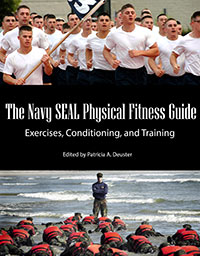
“Exercise like a Navy SEAL!?” you might be thinking after reading the title. “Pfffft – yeah, right!” The truth is you don’t have to be twenty years old and ripped to gain some takeaways from Navy SEALs’ exercise routines and fitness regimens. Following the SEAL physical fitness guide can show you how to up your exercise game just the same.
by Logan Misseldine, contributing writer
“I don’t have enough time” is no longer a good enough excuse for most of us these days. During this time of coronavirus pandemic, with unemployment at an unprecedented high, there’s nowhere to hide. Everyone knows you’re home. To combat the boredom and the unease that comes from a world slowly falling apart, people are finding anything to keep their minds busy. Baking, arts and crafts, and other hobbies have been helping keep people’s minds from being consumed with the anxiety and fear brought on by the current lockdowns.
People are also using the time they have to take exercising their bodies much more seriously, all sorts of memes and jokes have referenced the “quarantine body” that they plan to have when the crisis is over.
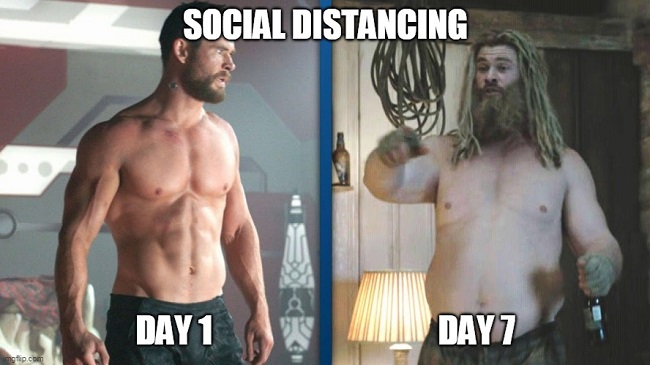
People that were already taking their fitness lifestyle seriously may now be facing a few new challenges that weren’t around earlier this year. On top of more and more people using the roads and bike paths, many gyms are closed and have no idea when they’ll open back up. It’s difficult to come up with an exercise regime that not only keeps you fit, but also challenges you and pushes you to new fitness levels.
Even outside of having the extra time due to the quarantine, it’s a smart idea to keep yourself as healthy as possible. The better condition you keep your body in will allow you to be able to not only stave off a number of health complications but also be prepared to protect yourself or perform in an emergency situation – or for bugging out!
If you’ve struggled with this you’ve probably fumbled your way through apps, videos, books, and even DVD sets. Many of these are good places to start but might not put you on the level that you’d like to be on.
Allow me to give you an in depth sneak peek into The Navy SEAL Physical Fitness Guide edited by Patricia A. Deuster, and why it might be what you’ve been looking for. It has 304 pages filled with great information, charts, and guides.
It is THE official military guide book used for the Navy SEAL fitness regimen.
What is The Navy SEAL Physical Fitness Guide?
Anyone that’s been deployed into military service has a level of grit and mental resolve that many people today lack, but growing up I remember the Navy SEALs being the go-to group to reference when mentioning a scenario that required the best of the best. Whether or not you agree with this opinion, it’s no joke that the Navy SEALs withstand a lot of physical hardship in both training and deployment. There isn’t a higher level of fitness that I can think of than a battle hardened SEAL.
The Navy SEAL Physical Fitness Guide is an extensive compilation of recommended fitness regiments composed by several medical military personnel, with input and practical recommendations from SEALs that have had more than enough experience, to help you achieve the following goals:
- Enhance the physical abilities required to perform Special Operations mission-related physical tasks
- Prevent injuries and accelerate return to duty
- Promote long-term cardiovascular health and physical fitness
- Maintain physical readiness under deployed or embarked environments
Now I know that most of who are going to be reading this book aren’t actually in the military or deployed as such, we can take these goals and easily tweak the vernacular to fit our civilian purposes.
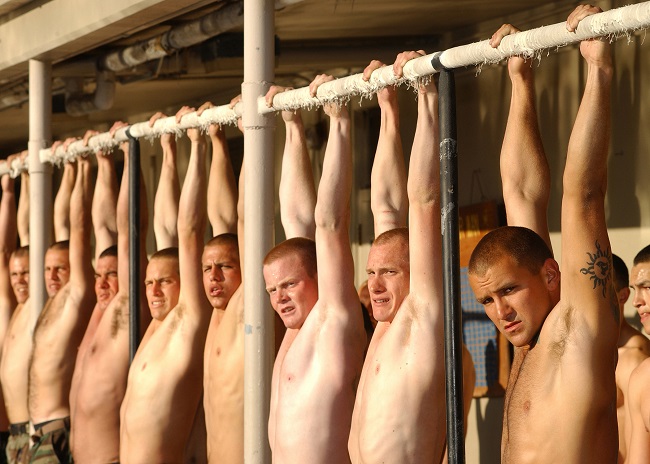
There isn’t enough space here to go into the massive amount of information within this guide, so my intention will be to relate enough information to you to decide whether or not you want to challenge yourself to the regiment this guide will show you.
While I’m not going to be performing any “Special Operations,” or be deployed to a foreign battle zone anytime soon, I can take the mentality gained by the completion of these goals to better the results of my own “missions” even if they’re not directly comparable to one that a SEAL would complete.
The better your fitness is, it will be easier to effectively complete the “missions” and goals that you establish. This guide will allow you to improve your physical performance, which will enable you to complete the aforementioned goals, in two main categories, skill-related components and health-related components.
Skill-Related Exercises
Fitness is composed of more than just the capability of your body to endure stresses, but also your ability to perform under that stress. The main components listed, and defined, in this guide are as quoted:
- Agility: “The ability to change physical position with speed and accuracy”
- Balance: “Ability to maintain equilibrium when stationary or while moving”
- Coordination: “Ability to use the senses, such as sight, along with the functioning of a set of muscle groups to complete an activity accurately”
- Speed: “The Ability to perform a movement in a short period of time”
- Power: “Ability of a muscle to quickly generate force over a very short period of time”
- Reaction Time: “Time taken between receiving a signal and reacting to it”
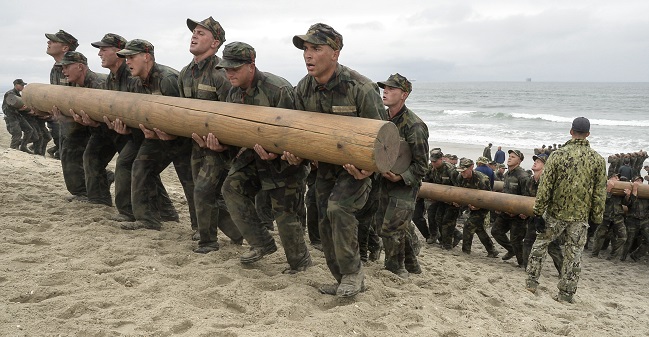
Health-Related Fitness
Health related components deal with the capability of your body to withstand the impact and stress that you’ll encounter on your “missions”. This guide will help you optimize your:
- Cardiorespiratory Endurance: “Ability of the heart, lung and blood vessels to transport oxygen and remove waste products from the exercising muscle”
- Muscular Endurance: “Ability of a muscle or muscle group to contract at a sub maximal force, usually against 50 to 60% of maximal resistance, over a period of time. Measured as the number of repetitions completed.
- Muscular Strength: “Maximal force or tension generated by a muscle or muscle group”
- Body Composition: “The percentages of fat, bone, water and muscle in human bodies”
- Flexibility: “Controlled range of motion of a specific joint.”
Just about any exercise will improve both your mind and body, give you mental and emotional discipline, and leave you better prepared for an emergency. But like a lot of preparations, some exercises are going to be more intense than others, also people can be better suited to different exercises. It can take a long time to perfect a personal workout routine, many people have spent a better part of their lives finding what works best for them.
If you’re one of those people that are just beginning to dive into finding your fitness routine, or are trying to find a way to improve what you already are doing, there are several reasons why this guide is a good place to turn to.
Why Should You Use this Guide?
If the fact that this was designed by and for military personnel isn’t enough to convince you that this book is worth your time, there are plenty of reasons why the information inside will benefit your fitness regimen. This guide was structured to meet the physical requirements for any Navy SEAL mission, and while it seems a little gregarious that anyone that’s not a SEAL would need to participate in such an intense regiment, for someone that is intending on preparing for the worst case scenario this may be one of the best choices out there.
You Don’t Have to be a Navy SEAL
Normally, to get the kind of knowledge and routines found in this guide you would have to pay hundreds of dollars a month or join the armed forces. Now, for about ten bucks, you can access the treasure trove of practical and intensive physical training. Even though this guide is written as though the authors are speaking directly to one, you yourself don’t actually have to even be in the military, let alone a Navy SEAL.
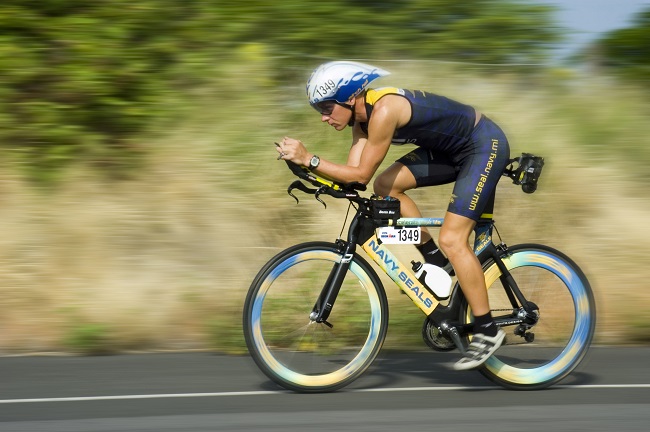
Anyone that can read and comprehend the way that the information is organized, will have the capability of taking advantage of the wealth of knowledge and translate it into their daily life and benefit greatly. As long as you have the book with you you can use the information anywhere you go, allowing you to adapt to your personal situation.
Quantity of Quality Information
When I first picked up and began to thumb through the guide, the first thing that I noticed was just how much information there was. There’s a lot! This makes sense when you take into consideration that there are ten contributing authors. Each section is filled to the brim with more than enough information to help you learn not only how to perform the exercises that will improve your body, but also to give you a deeper understanding of your body and how it will adapt to the stresses you’ll put it through.
Not only do you get a massive wealth of information, it’s of a superb quality. Each of the authors has extensive medical andor military experience, which can be easily seen in the way that they expertly define and explain each facet of this fitness regime. Each author was able to use the years of medical training and research to accurately and effectively compile each section to the point that the reader is able to bring the provided knowledge to their day to day routines.
Like any instructional book that’s worth its snot, the authors don’t just simply throw out explanations and examples in large blocks of paragraphs, they flesh out the most complex concepts and explanations by incorporating easy to understand graphs and diagrams that help you better visualize the information. This allows you to not have to search and reread the entire book if you can’t remember a particular part, if it’s covered in one of the many tables and diagrams you can easily access the information at a glance.
Prevent Exercise Injuries and Maximize Fitness
No matter what you do, there will always be a risk injuring yourself. Even the most mundane and simple tasks can quickly go wrong and leave you incapacitated. Working out will do your body no good if you consistently injure yourself, you will hold yourself back from the potential strength and endurance that you’d have if you were able to maintain your physical integrity.
The Navy SEAL Physical Fitness Guide contains an entire portion dedicated to showing you how to maintain your body, preventing you from overextending yourself and keeping you from continuing, it does this by describing:
- Treatments for training-related injuries
- Reconditioning for return to full activity
- Types of training injuries
- Common mission-related injuries
- When to seek medical care
Many people that are trying to get started on their own often focus on one kind of exercise. Participating in just one type will leave you strong in one area but weak in others, which can lead to an injury if you over-train one muscle group or overextend an under-exercised group. To both combat injuries and optimize your fitness this guide illustrates several complete week to week routines that incorporate multiple types of exercises such as:
- Swimming
- Running
- Weight lifting
- Backpacking
While each of these have the capability of giving an individual great health individually the well rounded and complete physical strength and endurance that excelling in multiple intensive exercises gives a SEAL (or you) the capability to go above and beyond normal physical thresholds.
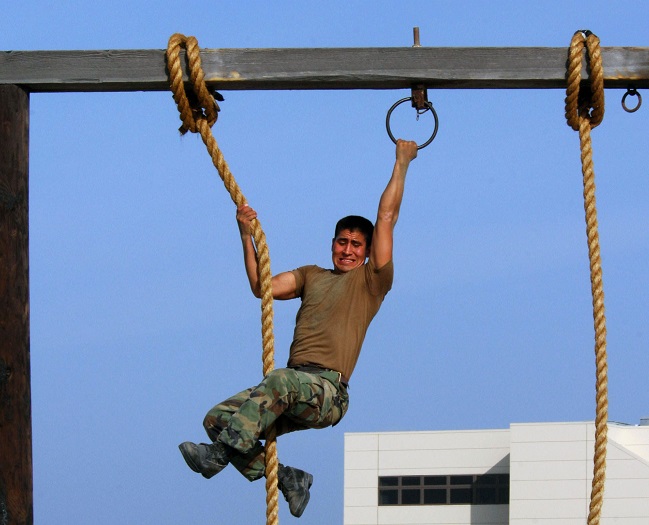
The higher your threshold of endurance is, the more effort and energy you will be able to exert before your body begins to fatigue.
Easy-to-Follow Instructions
One of the biggest challenges when it comes to working out is that for people that don’t want to go out and pay for a gym or trainer, the massive amounts of work that it takes to put together a routine is completely up to the individual. Whether the reason is because of a dislike for people being involved in personal matters, or you don’t have the money for a trainer, buying this guide will allow you to have inexpensive access to a challenging and well rounded fitness plan. If you’re a person that feels like that you have to be at a certain level of fitness, this book can be started by anyone at any point on your fitness journey.
Portions of the book are dedicated to helping you find your target performance based off of your age and current capabilities. One of the most useful aspects of the guide is that it goes over the basic safe structure of fitness routines (From warm ups to cool downs), for those that have little to no experience. This allows for a larger number of people to be able to utilize this guide without endangering their bodies and allowing them to get the most out of their efforts.
It also provides you with recommended fitness programs that incorporate the full gambit of exercises, even giving you a day to day weekly schedule that will take away the headache of the planning part and you can just focus on working on your fitness.
Measurable Goals
There is a huge desire to be physically fit for just cosmetic reasons. Whether you believe it to be caused by the “media’s beauty standards” or some other reason, there are thousands of men and women alike that aspire to sculpt their bodies into a certain expectation. Each year they fill gyms, spend thousands of dollars on all sorts of do it yourself options, or simply try and run around long enough to sweat it off. Not to mention the time and effort put into ways to find the “shortcuts.” If you take it seriously enough and stick to a reasonable habit of utilizing this guide to its full potential, you’ll end up with a body physique you can be proud of. But this is nowhere near the point of this guide.
Especially in this day and age where processed foods, increasing amounts of sedentary lifestyles, and the current stressful political/societal climate, it’s getting harder and harder to keep up the discipline needed to keep our fitness where it should be. One of the hardest parts of keeping up with our bodies that I’ve personally encountered is it’s hard to not get discouraged when you don’t, “see any results,” fast enough. We are an impatient species and unless you’re able to develop the needed discipline, it can be difficult to not slip into the natural craving for instant gratification.
The program established in this guide is far from a light, easy, breezy workout that you can just skate through. This was designed to kick your ass, hard, and get you into battle ready shape fast. Because of the hellish difficulty of this guide it’s easy to see results. One week you can barely stumble your way through the recommended miles of running, swimming, and hiking, you’ll quickly find that your dedication will end up paying as you can push yourself just that much further the next week.
With the bar being set so incredibly high, it’s easy to establish a series of small attainable goals to reach whatever overall goal you wish. Rome wasn’t built in a day as they say.
Necessary Exercise Equipment
Because the guide is designed specifically for Navy SEAL training there is some specific equipment that assists in the different exercises. While it’s ideal to the program that you have the capability to access the equipment and spaces to utilize each workout, you can absolutely make do and use whatever you have on hand. In the end, there isn’t much equipment that you really need to at least begin the program but if you find yourself wanting to push yourself to the next levels. Here’s all the equipment that’s listed as needed for each exercise within the guide:
Running Shoes
Preferably a pair that will give a decent level of shock absorption, cushioning, motion control and durability. The guide goes over the particular details you should look at to get the best pair for you. This also includes cleats that give you traction in cold weather.
Weather Specific Clothing
There is no specifically listed clothing but in order for you to safely run in any weather you have to dress in according layers and materials. In colder weather you’ll have to bundle up more and use common sense to determine whether or not you should stay indoors or not, warmer weather won’t require nearly as much clothing.
Open Water Swimming
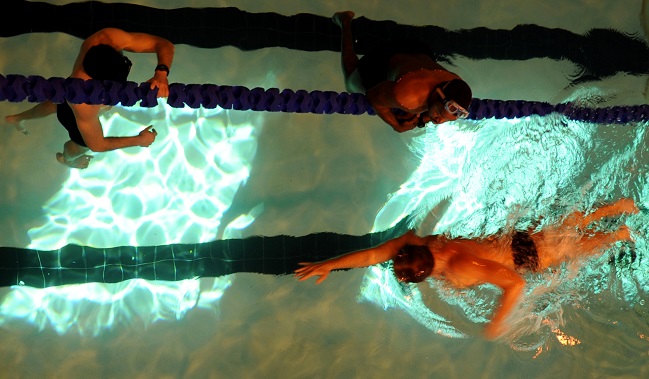
It should come as no surprise that swimming is a key component in Navy SEAL training. Besides the mission-driven needs for swimming, it is an exceptional cardiovascular and strength-training exercise.
- Wet Suits: The human body loses heat in water much quicker than in air, a wet suit may be necessary to keep yourself warm while swimming in cold water.
- Fins: There are many fins that pertain to specific needs of the type of swimming you’ll be doing. The main three factors to keep in mind are, the physical attributes unique to your body, the specific design of the fin, and the operational constraints.
Strength Training
- Weights: The main point of strength training is a set of weights, there is no specific amount or type that you need which allows you to adapt to create substitute free weights to replace whatever you don’t have. If you have the ability you can also purchase workout machines that utilize motion as well as weight to build strength to build strength, you can use these in tandem with free weights.
- Supportive and Protective Clothing: This can include weightlifting belts, gloves, supportive shoes, etc. Make sure that it fits and won’t get in the way of your safety.
You don’t always need top of the line equipment to get what you need out of this guide. You don’t need large amounts of expensive gear to be fit. Creative problem solving is a great mental exercise that works very well with physical training, think outside the box to save money and bring even more satisfaction to your hard work.
Navy SEAL Fitness Summary
It’s never easy to get your body into the kind of shape that it takes to overcome the most difficult scenarios you might encounter. Many people train to get more and more proficient in the specific sport they enjoy which may or may not even help them outside of that specific sport. While no matter what you do to improve your health will benefit you in the long run, when it comes to certain scenarios some levels of fitness are better than other no matter how small the difference.
To the prepper mindset of being ready for any cataclysm, The Navy SEAL Physical Fitness Guide is a perfect tool for you to use to keep yourself at an extraordinary level that will give you the skills and endurance that can enable you to have an advantage when you’ll need it most.
I’m curious – what does YOUR exercise training routine look like?

